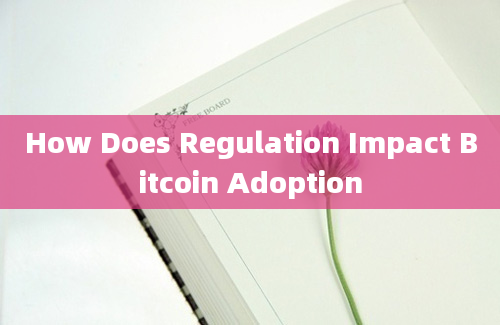How Does Regulation Impact Bitcoin Adoption?

Bitcoin, as the pioneer of the cryptocurrency revolution, has seen a rollercoaster ride in terms of regulatory landscapes across the globe. The impact of regulation on Bitcoin adoption is a multifaceted topic that touches on legal, economic, and psychological aspects. This article delves into how different types of regulations can affect the adoption rate of Bitcoin.
Legal Framework
1. AntiMoney Laundering (AML) and Know Your Customer (KYC) Requirements:
Impact: Stringent AML and KYC regulations can make it more difficult for individuals to acquire Bitcoin without proper identification, which might deter some users but can also make Bitcoin exchanges more trustworthy and compliant.
Explanation: By requiring exchanges to implement AML and KYC measures, governments aim to prevent Bitcoin from being used for illegal activities such as money laundering. This can create a more secure environment for legitimate users but might also dissuade those who prefer the pseudonymous nature of Bitcoin.
2. Taxation:
Impact: Varying tax treatments of Bitcoin can significantly impact its adoption. High taxes can discourage users from investing in Bitcoin, while favorable tax policies can encourage adoption.
Explanation: Taxes can be levied on Bitcoin transactions, gains, or even on the possession of Bitcoin. Countries with lower taxes on cryptocurrency gains tend to see higher adoption rates as investors are more likely to invest in Bitcoin for potential profits.
Economic Factors
1. Exchange Controls:
Impact: Exchanges that are subject to strict exchange controls might limit the ability of citizens to trade Bitcoin, thereby affecting its adoption.
Explanation: If a country's government controls the flow of currency in and out of the country, it may also restrict the use of foreign currencies like Bitcoin, thus limiting its adoption within the domestic market.
2. Interest Rates and Inflation:
Impact: In regions with high interest rates or inflation, Bitcoin might be seen as a hedge against the devaluation of local currencies, leading to increased adoption.
Explanation: Bitcoin's deflationary nature (with a capped supply) makes it attractive as an alternative store of value when the local currency is experiencing high inflation or is subject to volatile interest rates.
Psychological and Sociological Factors
1. Public Perception:
Impact: Negative public perception due to regulatory news can cause a drop in Bitcoin adoption, while positive news can lead to an increase.
Explanation: Public sentiment plays a crucial role in the adoption of Bitcoin. Regulations that are perceived as supportive can bolster confidence, while those seen as hostile can erode it.
2. Financial Inclusion:
Impact: Regulations that promote financial inclusion can indirectly foster Bitcoin adoption, as it provides an alternative financial service to those excluded from the traditional banking system.
Explanation: In regions with limited access to traditional banking, Bitcoin can serve as a financial tool for the unbanked, thus expanding its user base.
Common Questions About Regulation and Bitcoin Adoption
1. What is the most significant regulatory challenge for Bitcoin adoption?
The most significant regulatory challenge for Bitcoin adoption is likely the difficulty in maintaining a balance between enforcing antimoney laundering laws and ensuring financial privacy.
2. How do regulations in one country affect Bitcoin adoption globally?
Regulations in one country can affect global adoption by setting precedents and influencing the regulatory stance of other countries.
3. Can strict regulations completely halt Bitcoin adoption?
While strict regulations can significantly reduce Bitcoin adoption, it is unlikely to completely halt it, as Bitcoin's decentralized nature allows for continued use even under restrictive laws.
4. How does the age of the user impact their willingness to adopt Bitcoin under different regulatory environments?
Younger users tend to be more open to adopting Bitcoin due to their familiarity with technology and lower risk aversion, while older users might be more cautious due to regulatory concerns.
5. Is there a direct correlation between Bitcoin price volatility and regulatory changes?
There is an indirect correlation; regulatory changes can lead to market volatility, which in turn can affect Bitcoin adoption.
6. How do governments use regulation to manage the growth of the cryptocurrency market?
Governments manage the growth of the cryptocurrency market through licensing, taxation, and direct prohibitions, aiming to mitigate risks and protect consumers.
7. Can regulation actually accelerate Bitcoin adoption in some cases?
Yes, in some cases, regulation can accelerate adoption by providing clarity, fostering trust, and encouraging institutional investment.
8. What is the role of international cooperation in regulating cryptocurrencies?
International cooperation is essential in regulating cryptocurrencies as it helps set global standards, prevents regulatory arbitrage, and enhances crossborder enforcement.
9. How do Bitcoin regulations vary across different continents?
Regulations vary greatly across continents, with some regions having outright bans, others allowing for open trading, and still others implementing varying degrees










